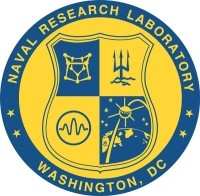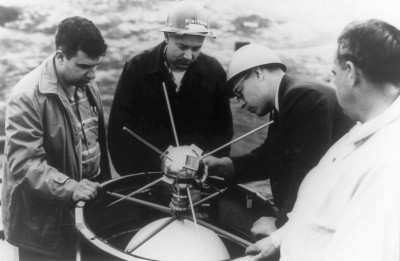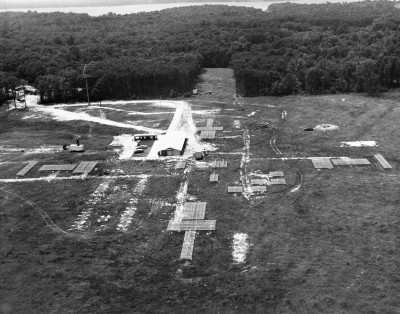Roger Easton Pioneered Satellite Telemetry And Timing
 Roger L. Easton has been recognized by the National Inventors
Hall of Fame for pioneering achievements in spacecraft tracking and
timing and navigation technology (TIMATION) that led to the
development of critical enabling technologies of the NAVSTAR-Global
Positioning System (GPS).
Roger L. Easton has been recognized by the National Inventors
Hall of Fame for pioneering achievements in spacecraft tracking and
timing and navigation technology (TIMATION) that led to the
development of critical enabling technologies of the NAVSTAR-Global
Positioning System (GPS).
At the award ceremony hosted by Under Secretary of Commerce for
Intellectual Property and Director of the United States Patent and
Trademark Office, David Kappos, Wednesday at the Department of
Commerce in Washington, D.C., Roger Easton received the NIHF Medal
of Honor for TIMATION, U.S. Patent 3,789,409, the critical system
enabling modern GPS.
“Roger’s career contributions and his keen ability
to develop new, bigger ‘problem sets’ from his
experiences are what impressed me most,” said long time
colleague and current Director of NRL’s Naval Center for
Space Technology, Pete Wilhelm. “His leap in vision led to
the United States’ first satellite tracking network and
patent of synchronized timing of spacecraft which became the
fundamental basis for GPS.”
Easton began his career in 1943 at NRL as a research physicist,
and was part of the team that developed the United States' first
satellites.

Easton (left) Supervises Assembly Of
Vanguard Satellite Photo Courtesy NRL
When the Soviet Union launched Sputnik into orbit, the United
States could not track non-radiating satellites or determine if
other launches occurred. Easton solved this problem by extending a
system he helped design called MINITRACK, which only needed to
transmit a signal of a few milliwatts due to the very high
sensitivity of the MINITRACK interferometer antenna design, to
actively follow unknown satellites orbiting Earth. Under his
leadership, with sponsorship through the Department of Defense
Advanced Research Projects Agency, now referred to as DARPA, the
Naval Space Surveillance System (NAVSPASUR) became the world's
first system to detect and track all types of Earth-orbiting
objects, thus contributing to America's national security and sense
of well-being during the Cold War.
“As the number of objects in orbit grew it became apparent
to Roger that adding a ‘second fence’ parallel to the
main fence, with an offset of about 90 miles, a ‘one
pass’ solution could be provided to determine the
object’s orbit. Roger further improved the accuracy and
utility of the data by adding ranging tones to the transmitted
signal at the second fence. This however required that the
receiving and transmitting sites, which were a number of miles
apart, had to be set precisely on the same time base,” added
Wilhelm. “Maintaining the accuracy required turned out to be
difficult to accomplish and led Roger to the vision that the way to
do this was put very good clocks, probably atomic clocks, in
satellites,” he said.

MINITRACK Station Photo Courtesy
NRL
Easton conceived the idea of using satellite-carried precise
atomic clocks for passive ranging. Starting in 1964, he conducted
research, carried out space-based experiments, and published his
findings that accurate, reliable and instantaneous satellite
navigation could be achieved with passive ranging, circular orbits
and a constellation of space-borne high-precision clocks
synchronized to a master clock, the primary features of modern
GPS.
His work exploiting space-based systems for geodesy, navigation,
and timing laid the foundations for his visionary leap to the
concept he dubbed TIMATION, short for time-navigation. Sponsored by
the Naval Air Systems Command, Easton tested his concepts at NRL
through the development and launch of four experimental satellites:
TIMATION I and II (in 1967 and 1969) and Navigation Technology
Satellites (NTS) 1 and 2 (in 1974 and 1977).
NTS-2, the first satellite to fly in the GPS 12-hour orbit and
transmit GPS signals, flew the first cesium atomic frequency
standard in space. Using time measurements from NTS-2, he
experimentally verified Einstein's theory of relativity. A
relativistic offset correction that he applied is still in use by
every satellite in the GPS constellation. While initially designed
for use by the military, GPS has been adapted for civilian use from
commercial airline navigation to portable hand-held and wrist-worn
devices.
GPS today is a constellation of Earth-orbiting satellites
providing precise navigation and timing data to military and
civilian end-users around the globe. Easton, as a scientist and
engineer at NRL, developed his concept for a time-based
navigational system with passive ranging, circular orbits, and
space-borne high precision clocks synchronized to a master clock.
The U.S. Patent Office received his submittal, "Navigation System
Using Satellites and Passive Ranging Techniques," and on January
29, 1974 it was assigned U.S. Patent 3,789,409.

TIMATION Satellite Photo Courtesy
NRL
In 2005 Easton was awarded the National Medal of Technology by
President George W. Bush for his invention of the MINITRACK
satellite tracking system used to determine the orbits of early
Vanguard satellites; his development of the Naval Space
Surveillance System which remains in use today cataloging all known
man-made space objects orbiting Earth; the invention of a
Navigation System Using Satellites and Passive Ranging Techniques
and his subsequent development of Time Navigation and Navigation
Technology Satellites that formed the technological basis for
modern GPS.
The National Inventors Hall of Fame honors the women and men
responsible for the great technological advances that make human,
social and economic progress possible. Each year, the Selection
Committee of the National Inventors Hall of Fame Foundation selects
inventors for induction from those nominated by peers and the
public for contribution to the nation’s welfare and progress
of science and useful arts. The Selection Committee includes
representatives from leading national scientific and technical
organizations. Prior to this year’s induction ceremony, 405
inventors have been inducted to the National Inventors Hall of Fame
since its formation in 1973.
 ANN's Daily Aero-Linx (04.15.24)
ANN's Daily Aero-Linx (04.15.24) Classic Aero-TV: 'No Other Options' -- The Israeli Air Force's Danny Shapira
Classic Aero-TV: 'No Other Options' -- The Israeli Air Force's Danny Shapira Aero-News: Quote of the Day (04.15.24)
Aero-News: Quote of the Day (04.15.24) Airborne 04.16.24: RV Update, Affordable Flying Expo, Diamond Lil
Airborne 04.16.24: RV Update, Affordable Flying Expo, Diamond Lil ANN's Daily Aero-Term (04.16.24): Chart Supplement US
ANN's Daily Aero-Term (04.16.24): Chart Supplement US






